Top 5 AI Chatbot Project Ideas for Healthcare
Published: 20 Apr 2025
Have you ever talked to a health chatbot?
These smart tools are becoming popular in hospitals, clinics and even health apps. They help patients, answer questions and remind people to take medicine. And the best part? You don’t need to be a tech expert to build one!
In this blog post, we are going to explore Top 5 powerful AI chatbot project ideas for healthcare. Each one is simple, useful and beginner friendly. If you are a student, a new developer or someone searching how AI can help in medicine, you will find something great here.
Let’s explore how you can build your own health chatbot with a focus on one idea at a time.
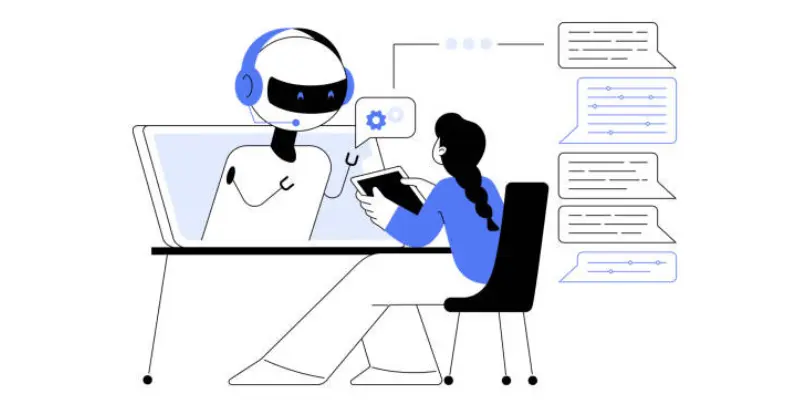
What Is an AI Chatbot in Healthcare?
An AI chatbot is a computer program that talks like a person. In healthcare, it helps patients, nurses and doctors by answering questions and giving support.
You can chat with it just like you would with a friend on your phone. But instead of irrelevant gossip, it talks about your health!
Why Are AI Chatbots Helpful?
- They give quick answers to common health questions.
- They remind people to take medicine on time.
- They help doctors by handling simple tasks.
Real-Life Example
Think about an app that asks how you feel and gives you basic advice. That’s what apps like Ada or Babylon Health do.
They are like mini health assistants in your pocket which are always ready to help.
Top 5 AI Chatbot Project Ideas for Healthcare
Let’s explore five chatbot ideas you can build without any advanced skills. These projects are great for beginners and can solve real healthcare problems. Each one includes a full explanation, how it helps and tips to get started.
Idea 1: Symptom Checker Chatbot
This chatbot asks people about their symptoms like fever, cough or pain and gives basic suggestions. If it finds symptoms complicated, it will advise to see a doctor as soon as possible. It doesn’t replace a doctor. It just gives early guidance.
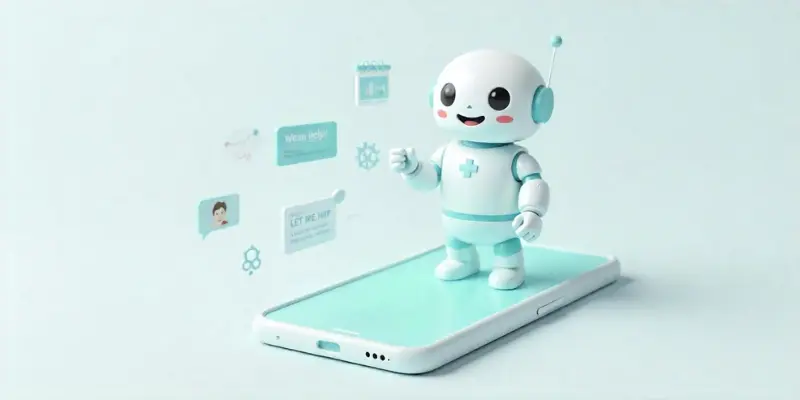
How it works:
The chatbot uses a list of common symptoms and matches them with possible illnesses. For example, if someone has a sore throat and a fever, it might suggest, “You may have a cold. Please see a doctor if it gets worse.”
Why it’s helpful:
Many people search online when they feel sick. But search results can be confusing or scary. A chatbot can make this safer by offering trusted answers in a friendly way from trustworthy platforms.
Beginner tip:
Start by creating a simple list of symptoms and link each one to a few common health issues. Use multiple choice or yes/no questions like:
- “Do you have a cough?”
- “How long have you felt this way?”
You can build this using free tools like Dialogflow or Tidio.
Idea 2: Medication Reminder Bot
This chatbot helps people remember to take their medicine. In the older age in which a man hardly remembers his name and there is a huge possibility that he might miss the daily doses, It sends daily messages, alerts or reminders at set times.
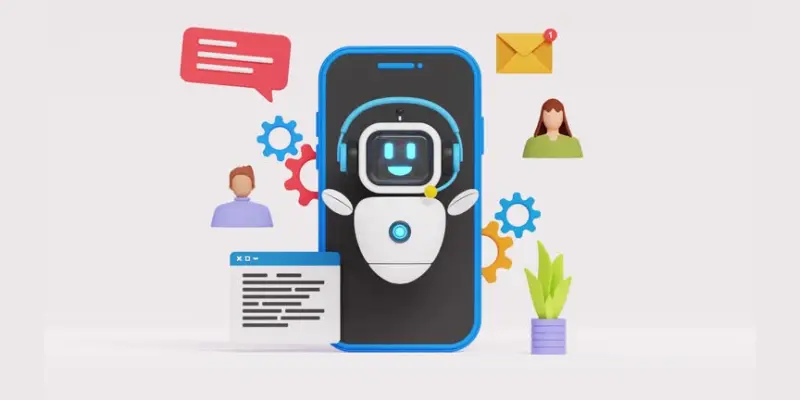
How it works:
The user adds details like the name of the medicine, time to take it and number of doses per day. The chatbot saves this and sends reminders on time.
Why it’s helpful:
Many patients forget to take their pills, especially older adults or those managing many medications. Missing doses can make treatment less effective. This chatbot keeps them on track.
Beginner tip:
You can connect the chatbot to a calendar tool or use built-in time settings. Add simple features like:
- “Remind me every morning at 9 AM.”
- “Mark as taken” button to confirm they followed the reminder.
Start with free chatbot platforms like ManyChat or BotStar.
Idea 3: Mental Health Support Chatbot
This chatbot offers a safe space for people who feel anxious, stressed or sad. Although a doctor can satisfy more than machines in case of mental health support. But, these chatbots also listen to their concerns and respond with comforting messages or simple coping tools.
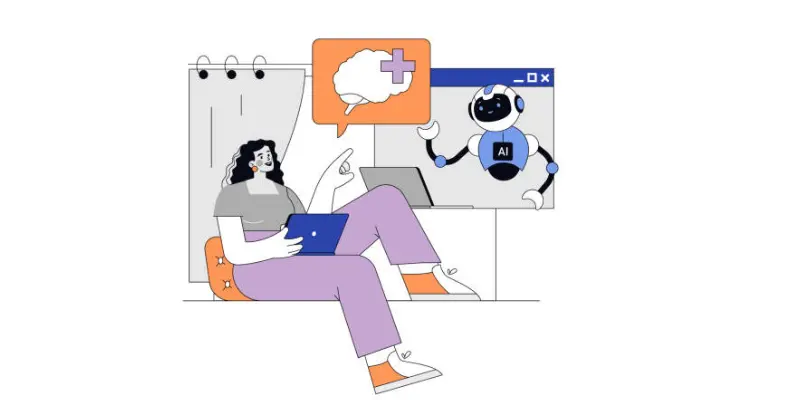
How it works:
The chatbot doesn’t diagnose. It gently asks, “How are you feeling today?” Based on the user’s mood, it gives helpful replies like:
- “Take a deep breath. You are doing your best.”
- “Would you like to try a short breathing exercise?”
Why it’s helpful:
Not everyone is ready to talk to a therapist. Some people just want someone or something to talk to. This chatbot makes support easy and private.
Beginner tip:
Start by creating a few common mood paths like:
- Feeling sad
- Feeling anxious
- Feeling okay but need support
Use calming language and avoid triggering words. Keep replies short, kind and friendly.
Also Read: AI Chatbot Projects in Healthcare For Students
Idea 4: Appointment Booking Assistant
This chatbot helps patients find and book doctor appointments. It shows available time slots and confirms bookings in just a few steps. These chatbots allow doctors to focus more on real patients, hereby reducing the paperwork

How it works:
The chatbot connects to a calendar or booking system. When a patient asks to schedule a visit, the bot shows free time slots and lets them choose. It can also collect details like name, reason for visit and contact info.
Why it’s helpful:
People often wait on hold to book appointments. This bot makes the process quick and stress free whether it’s day or night.
Beginner tip:
Use Google Calendar or any online scheduling tool and connect it to the chatbot. Add simple steps like:
- “Pick a date”
- “Choose a time”
- “Confirm your booking”
You can test it first with dummy data before linking it to a real system.
Suggested Article: How to Boost Your Career in Healthcare AI
Idea 5: Post Discharge Care Chatbot
After a patient leaves the hospital, this chatbot sends care tips, medicine reminders and warning signs to watch out for. This helps the patient to recover quickly after discharging from hospital and leads to better health outcomes.
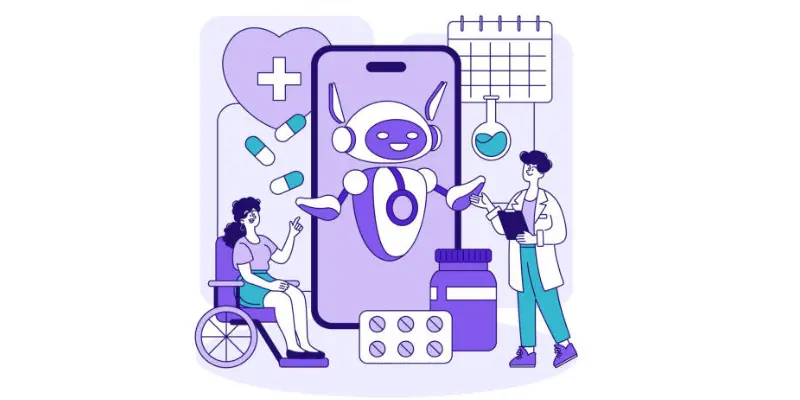
How it works:
Doctors or nurses can pre-load the bot with the patient’s care plan. Then, the chatbot checks in daily:
- “How are you feeling today?”
- “Did you take your medicine this morning?”
- “Here’s a tip: Drink more water today.”
Why it’s helpful:
Many patients feel confused after surgery or treatment. They may forget what the doctor said. This chatbot supports them step by step so they can heal better at home.
Beginner tip:
Start with common recovery tips for surgeries or treatments. Use check-ins like:
- “Rate your pain today from 1 to 5”
- “Are you eating okay?”
Keep it short and friendly.
Each of these chatbot ideas solves a real healthcare need. You don’t need to build them all. Pick one that excites you and start small. You will learn fast and help others along the way.
Quick Tips to Start Your Own AI Chatbot
So, you have got a chatbot idea. That’s a great start! But how do you turn it into something real? Don’t worry. You don’t need to be a coding expert. Just follow these simple steps to get going. In this article How to Build an AI Chatbot for Healthcare, I have discussed the process.
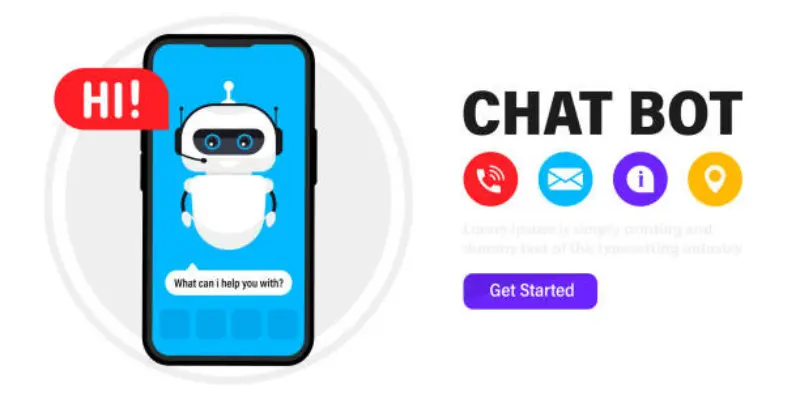
Tip 1: Pick One Simple Idea
Don’t try to build everything at once. Start with one small problem. For example, “I want to remind people to take their medicine.”
That’s enough to begin. You can add more later.
Tip 2: Use a No-Code Chatbot Tool
You don’t need to write code to build a chatbot. There are many tools that let you create one by clicking and dragging.
Here are some beginner-friendly tools:
- Tidio
- Chatfuel
- ManyChat
- Landbot
These let you build chatbots for websites, WhatsApp or even Facebook Messenger.
Tip 3: Write Friendly, Simple Messages
People like chatbots that talk like humans, not robots.
Use short, warm messages like:
- “Hi! How can I help you today?”
- “Don’t forget to take your pill at 8 AM 😊”
Avoid medical jargon. Keep it light and clear.
Tip 4: Test It with Friends or Family
Before you launch your chatbot, test it. Ask friends or family to try it.
See if they understand it. Ask:
- “Was it easy to use?”
- “Did it answer your questions?”
Then make small changes to improve it.
Tip 5: Keep Learning and Improving
Even simple chatbots can get better with time.
Watch how users interact. Notice where they get stuck. Add more answers or new features slowly.
Don’t worry if you did not make a perfect chatbot at first. Learning is part of the fun!
Want to make your chatbot even better?
Try adding:
- Emojis to make it friendly 😃
- Quick reply buttons
- A daily message feature
Small touches can make a big difference.
Conclusion
So guys, in this article, we’ve covered Top 5 AI Chatbot Project Ideas for Healthcare in detail.
If you are just starting out, I personally recommend building a Medication Reminder Bot. It’s easy to set up and solves a real problem many people face.
Now it’s your turn, pick one idea, start small and bring your chatbot to life. Let me know which one you are going to try first!
FAQs About Top 5 AI Chatbot Project Ideas For Healthcare
Here are frequently asked questions about AI Chatbot Ideas for Healthcare;
No, you don’t need to be a coding expert. Many no-code platforms like Tidio, Chatfuel and ManyChat let you build chatbots by dragging and dropping elements. You can start with templates and learn as you go.
Basic chatbots you build yourself may not automatically be HIPAA compliant. For storing patient data, you will need to use platforms specifically designed for healthcare privacy standards. Consider starting with non-diagnostic bots that don’t store personal health information if compliance is a concern.
A basic chatbot can be created in just a few hours using no-code platforms. More comprehensive solutions with custom flows might take a few days or weeks depending on complexity. Start small and add features gradually as you learn.
Yes, many chatbot platforms offer API connections to integrate with other software. You may need technical help for complex integrations with electronic health records or hospital systems. Simple connections to calendars or notification systems are easier starting points.
Chatbot for symptom checking made by beginners should be used for basic guidance only, not diagnosis. They can help users decide if they should see a doctor but aren’t replacements for medical professionals. Always include disclaimers about limitations and when to seek professional care.
For absolute beginners, Tidio or ManyChat offer user-friendly interfaces with healthcare related templates. Both platforms have free tiers to experiment with before investing money. Choose based on where you want to deploy your chatbot (website, messaging app, etc.).
Start by having friends and family use your chatbot and provide feedback. Track common questions users ask that your bot can not answer and add those responses. Consider A/B testing with different conversation flows to see which ones users complete more successfully.
Yes, there are several ways to monetize healthcare chatbots once they provide real value. You could offer subscription models, partner with healthcare providers or include premium features while keeping basic functions free. Start by focusing on solving a real problem well before monetizing.
Research evidence based techniques like basic cognitive behavioral therapy approaches and mindfulness. Include clear disclaimers about limitations and emergency resources for crisis situations. Ask mental health professionals to review your conversation flows if possible.
Balancing helpfulness with appropriate medical caution is the biggest challenge. Your chatbot needs to provide value without overstepping into diagnosis or treatment recommendations. Focus on supportive features, information gathering and connecting users with professionals when needed.





